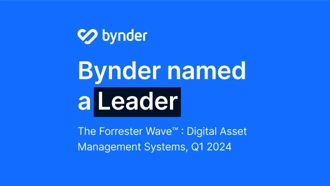What is content governance?
Content governance is the set of guidelines that determines how an organization’s content gets created and published. Having content governance in place ensures that your content is of consistently high quality, is on-brand, and remains aligned with an organization's goals.
Why do organizations need content governance?
An effective content governance strategy can bring your business greater levels of consistency, efficiency, and quality regarding its content creation:
- Consistency: Having a central set of content production guidelines means that content remains consistent across teams and channels.
- Efficiency: Understanding the content lifecycle allows content teams to see opportunities to streamline.
- Quality: Writers have access to documents such as editorial guidelines and messaging frameworks.
Content governance can also help organizations resolve — or even avoid — potential issues arising in their content production process.
For example, it helps put the right protocols in place so that everyone understands:
- The best process for approving new content
- Which content should be based on a template
- How and when to review old content for relevance
- The correct metrics and KPIs for measuring success
- That editorial guidelines exist and should be followed
How do you get started with content governance?
Content governance systems can vary wildly; from very simple to extremely detailed — it's up to you and your organization to decide what's right for you based on your business goals and the resources you have available.
A useful way to think about and approach content governance is to break it down into the following four steps:
- Define and get agreement on content ownership and roles
- Design and document content workflows
- Produce and document guidelines, standards, policies, procedures, and tools to operationalize content governance
- Deliver appropriate training to educate and align staff on content governance
Defining ownership and roles means that you have a content strategy that's ready to be put into action. A workable content governance model provides a framework for the practical operation and directional support of a content strategy.
Designing and documenting content processes means that everybody involved in content shares a common set of expectations over how content will be planned, produced, published, and governed; including where their role fits into it, as well as the ‘how’, ‘when’, and ‘why’.
Producing supporting documentation means that the organization is prepared with the necessary supporting materials that will uphold a consistent, autonomous approach to content. Differences in opinion and individual agendas can therefore be easily quashed because there are already pre-agreed ground rules in place for ‘doing content right’.
Delivering appropriate training to relevant staff means that everyone — under the same content governance — is aligned and well-equipped when it comes to how they contribute to and support the content creation process.





![Improving the digital experience in 2022 [Survey] — Key findings](https://www.bynder.com/transform/54f0e6e1-5450-4277-a201-b17324262268/blog-bynder-header-2022-july-improving-the-digital-experience-in-2022-key-findings.jpg?io=transform:fill,height:186,width:330&quality=95)
